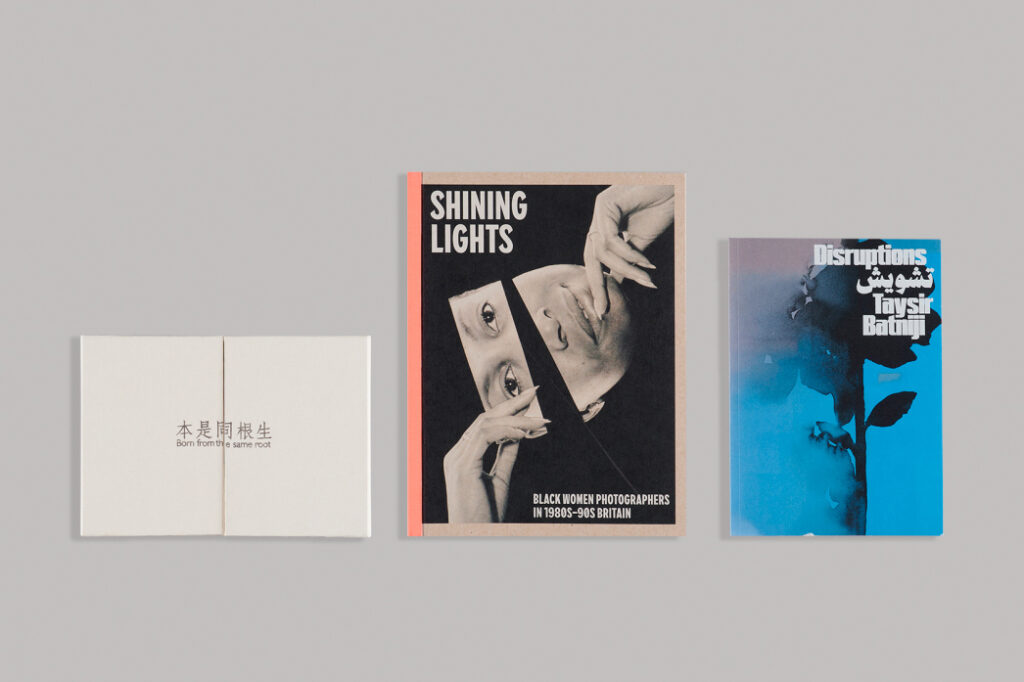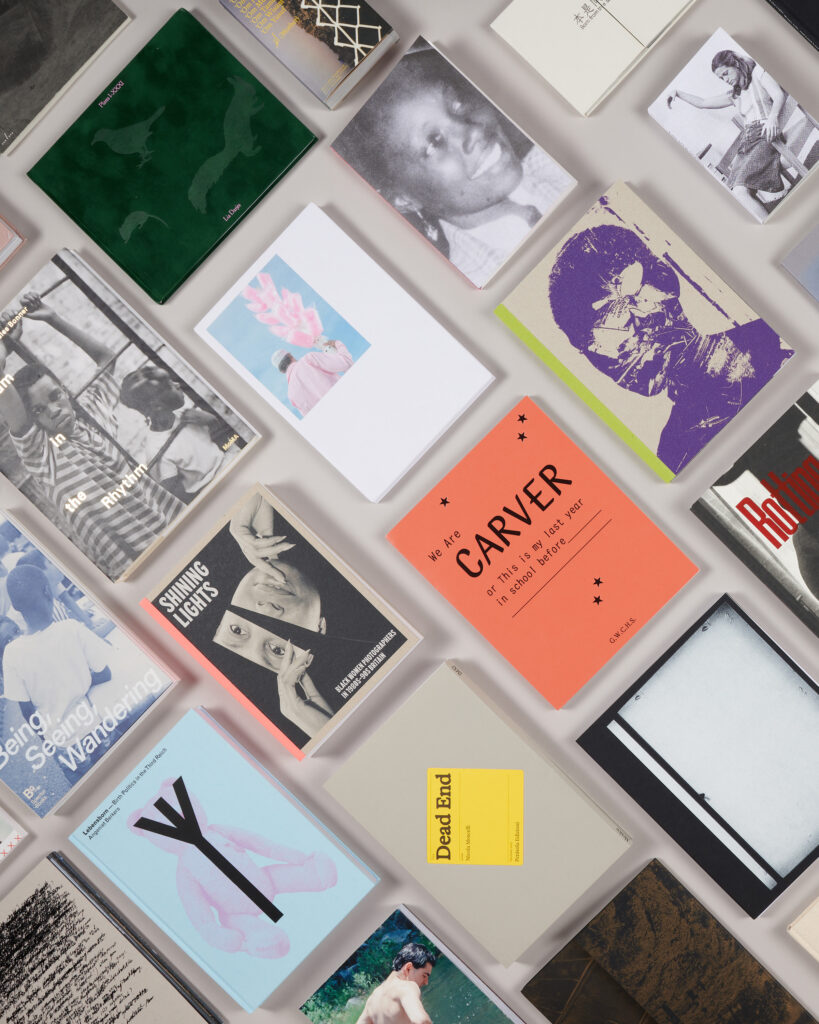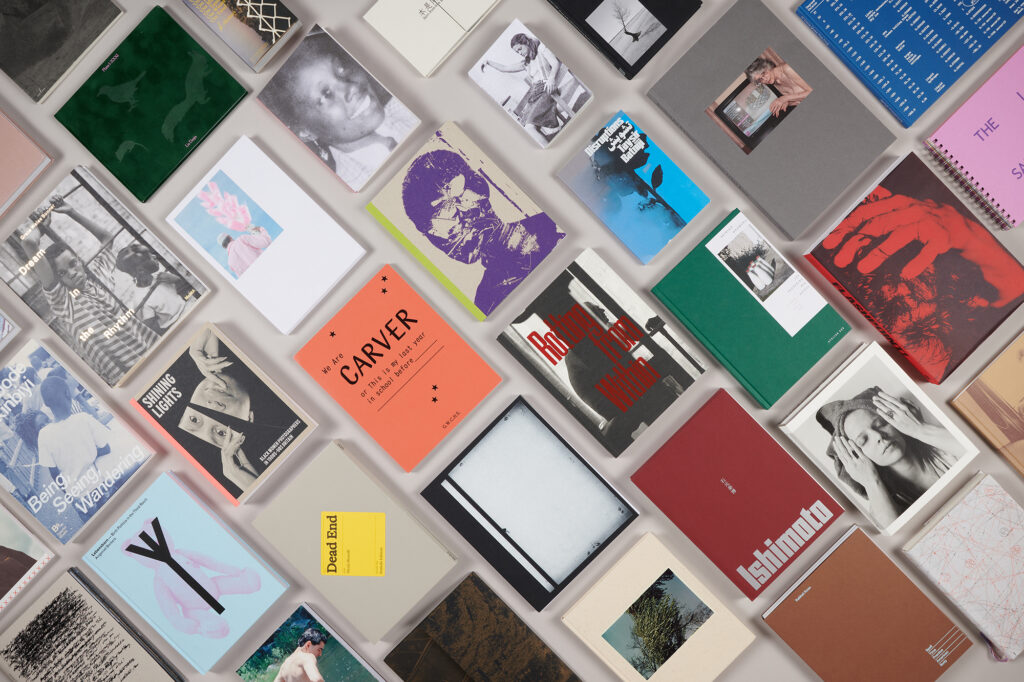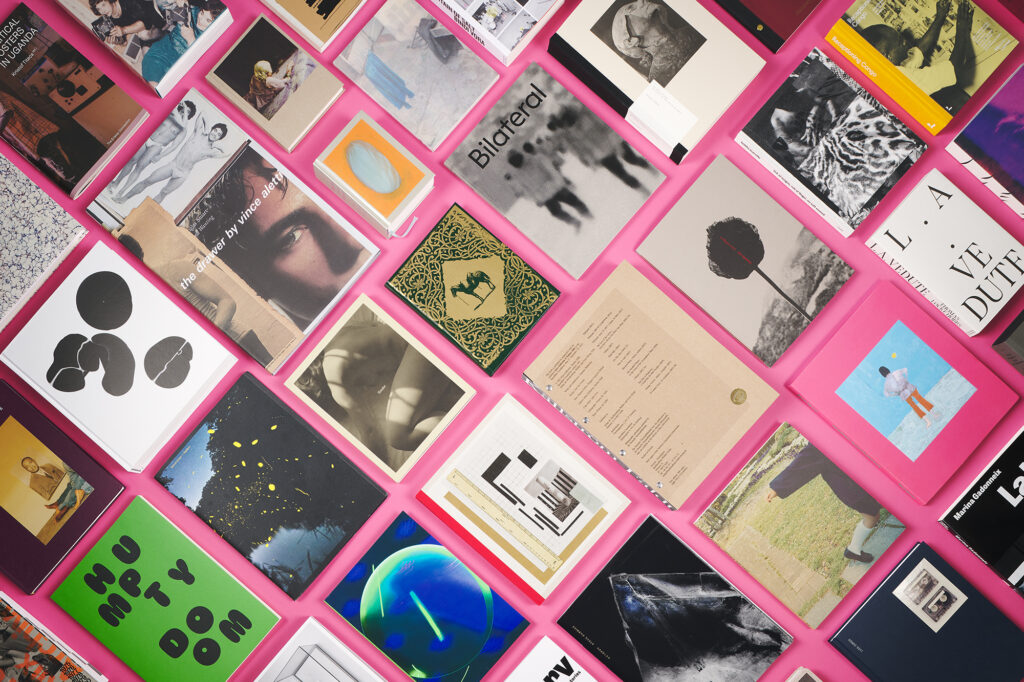PhotoBook Awards
A Look Inside the Titles Shortlisted for the 2023 PhotoBook Awards
These 35 photobooks highlight excellence in publishing across a wide range of topics and photographic styles.
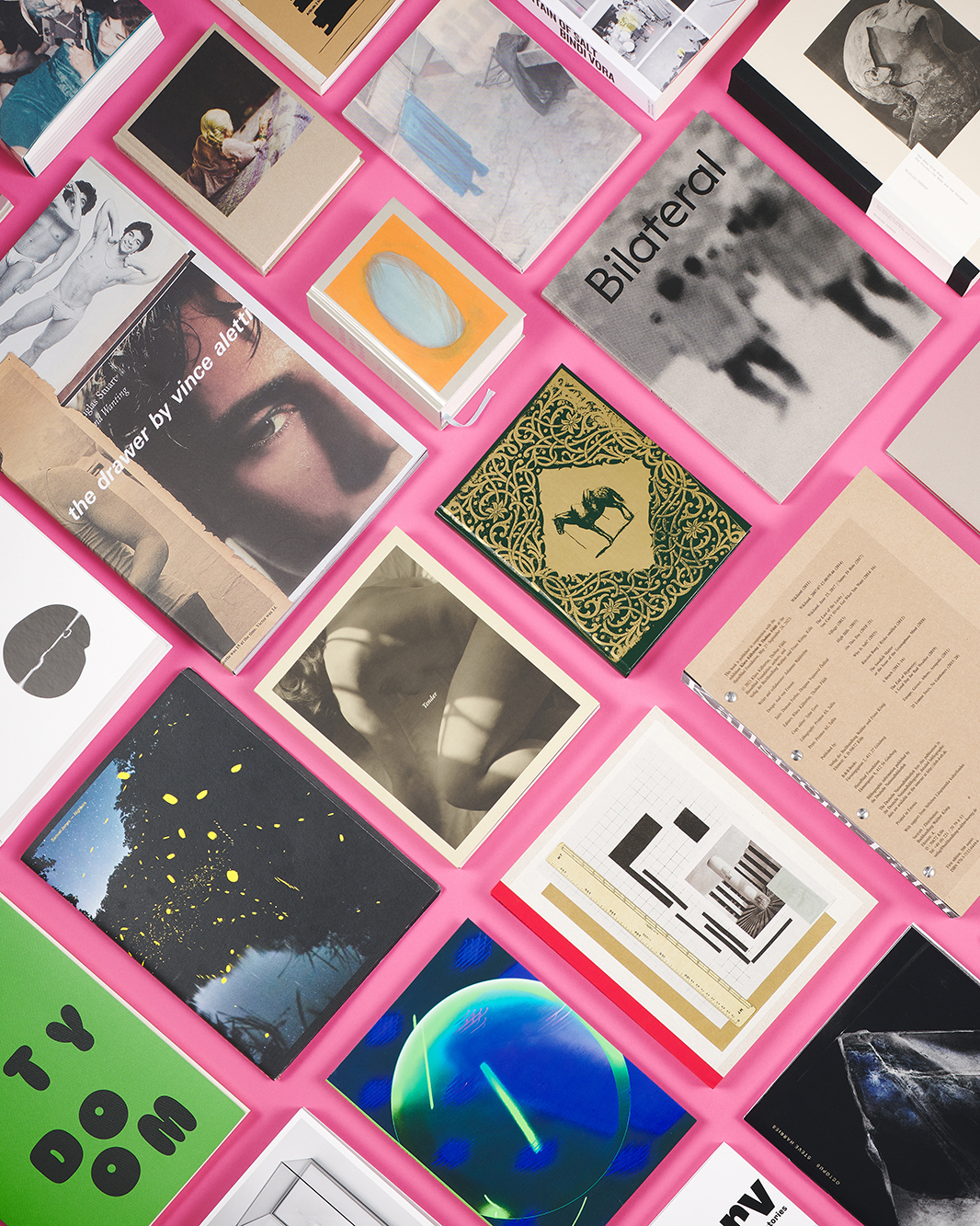
Photograph by Daniel Salemi
Now in its eleventh year, the Paris Photo–Aperture PhotoBook Awards are an annual celebration of the photobook’s contributions to the evolving narrative of photography. The awards recognize excellence in three major categories of photobook publishing: First PhotoBook, PhotoBook of the Year, and Photography Catalog of the Year.
This year, the Paris Photo–Aperture PhotoBook Awards shortlist jury reviewed over nine hundred books from sixty-one countries. The international team consisted of: Deirdre Donohue, assistant director of the Miriam and Ira D. Wallach Division of Art, Prints, and Photographs, the New York Public Library; Alex Lin, creative director and owner, Studio Lin; Lesley A. Martin, editor at large, Aperture; Renée Mussai, artistic director, the Walther Collection; and Anna Planas, artistic director, Paris Photo.
Anna Planas, artistic director of Paris Photo, and Florence Bourgeois, director of Paris Photo, jointly noted: “The PhotoBook Awards pursue, this year, their long-term commitment and support for photography books. We are very excited to celebrate this year’s exhibition with a selection that offers a source for discovery and enchantment to all photobook lovers. The PhotoBook Awards shortlist will feature thirty-five of the most relevant publications from the past year, giving an international overview of the diversity and richness of today’s production.”
On Thursday, November 9, a final jury met in Paris to select the winners for all three prizes. The jury included Laia Abril, artist; Tamara Berghmans, curator, Fotomuseum Antwerpen (FOMU); Alexis Fabry, curator and founder of Toluca Fine Art; Alona Pardo, curator, Barbican; Mark Sealy, director of Autograph and professor of Photography Rights and Representation at University of the Arts London. The announcement of winners in each category took place on Friday, November 10 at Paris Photo. After their exhibition in Paris, the shortlisted and winning titles will also be hosted at Printed Matter, New York in January 2024, and will tour internationally thereafter.
First Photobook

How was your dream? by Thaddé Comar
Mörel Books, London
How was your dream? by Thaddé Comar is a hyper-contemporary take on the Hong Kong protests of 2019. The photographs depict protesters collectively combatting police surveillance: portraits of faces covered by masks, glasses, and hats are juxtaposed against close-ups of drones, cellphone cameras, and the watchful gaze of riot police. The dystopian atmosphere and energy of the protests are perfectly conjured by Comar’s use of motion blur, lens flares, and neon colors richly printed as full-bleeds on high-glossy paper. “The strength of the moment is reflected in the images, the acid colors, and the frenetic design—a perfect capture of a near-futuristic moment,” Planas states. “The shine and electric colors fit the energy one feels in the images, and the portraits have a robotic feeling. It evokes the violence of the moment.” In How was your dream?, Comar persuasively evokes the urgent struggle of the people of Hong Kong fighting for their democratic rights.

Pasaco, 1996 by Luis Corzo
Kult Books, Stockholm
Pasaco, 1996 tells the shocking story of the abduction of Luis Corzo and his father, Juan Corzo Jr., when the photographer was just six years old. Kidnapped at gun-point by a Guatemalan organized crime group named Los Pasaco, Juan Corzo was tortured and the two of them were held for thirty days before being released. Luis Corzo has meticulously gathered together the documentation and evidence from this event, including testimony from the various players, portraits of his family, photographs of locations where the events took place, Polaroids of the two in captivity sent to his mother, letters exchanged at that time, and other materials bearing witness to this event. “The book has been carefully assembled via a very neutral, formal design—an almost clinical container purpose-built to hold this horrific story,” observes juror Lesley A. Martin. “It accomplishes an incredible balancing act, all the more effective for its restraint. A bilingual text by journalist Claudia Méndez Arriaza connects the personal story of the Corzos’ ordeal with the larger threads of violence and corruption across Guatemala—and how one can move toward reconciliation and a more just future for the country and its people.
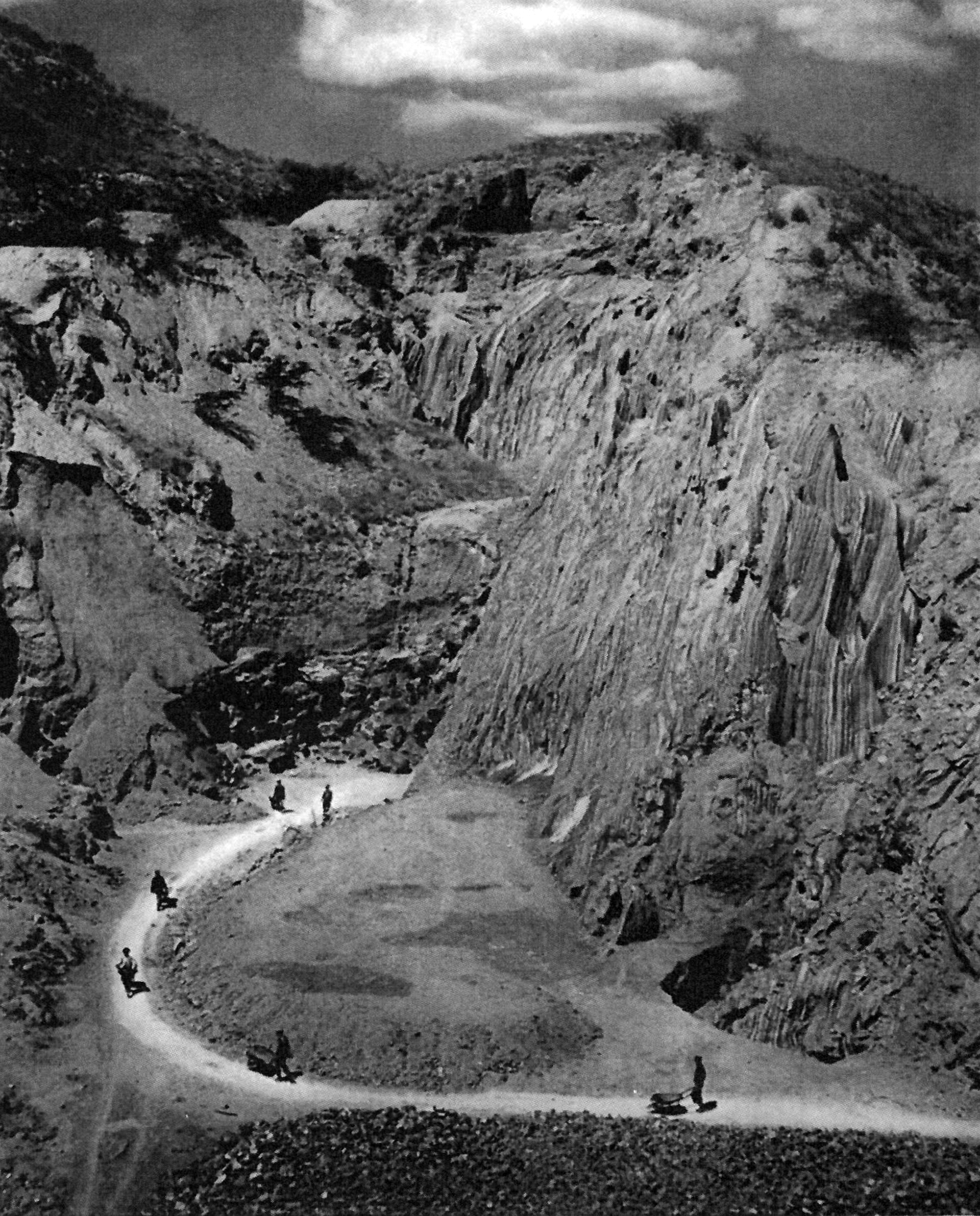
When Eye Land by Star Feliz
Printed Matter Inc., New York
Beautifully bound in green leatherette silkscreened in gold, When Eye Land brings together a multivalent exploration of self, identity, and memory in the face of a colonial past. Artist and healer Star Feliz channels their research-rich, installation-based practice into the pages of this book, assembling an engaging remix of maps, family photos, historical illustrations, and letters grounded in critical fabulation to tell the often-brutal history of the Dominican Republic and its people, including that of Feliz’s immediate family and their Afro-Taíno ancestral past. The images are reproduced on satisfyingly toothy paper, and accented throughout via the use of a gold Pantone ink. “It’s a gorgeous, absorbing book,” confirms Donohue, “a powerful invocation of the past, full of fascinating juxtapositions, contradictions, and personal, compelling details.” The text by Manuel Arturo Abreu makes note of the need for such stories to commemorate the struggles of the past to ensure the transmission of the lessons learned to future generations.
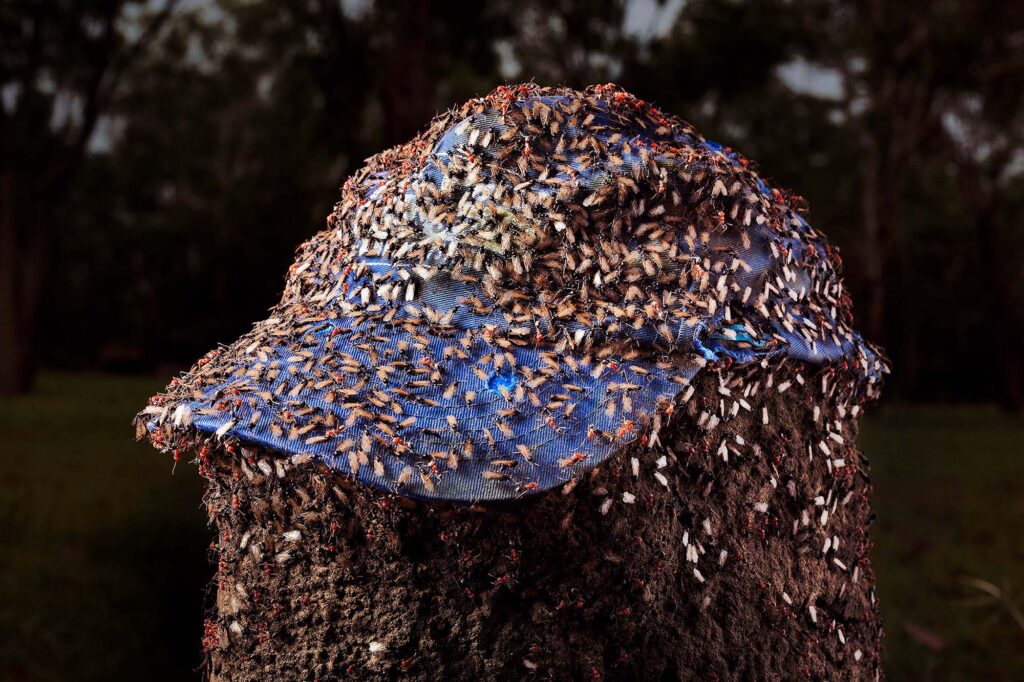
Humpty Doom by Liss Fenwick
Bad News Books, Wellington, Aotearoa/New Zealand
Photographer Liss Fenwick grew up in rural New Zealand, in a place inspirationally called Humpty Doo. The images contained within this slim paperback volume are a combination of pictures Fenwick took as a teenager, and recent photographs taken partially in response to those images. The photographs build a steady sense of foreboding—depicting burned-out cars and forests, eerily yellow skies, termite mounds, and rotting fruit, intriguingly set off against goofy grade school photos and early self-portraits or snapshots of family. In a recent image that appears early in the sequence, a tree bears the inscription “Larrakia Land” carved into its bark, a nod to the aboriginal inhabitants and traditional owners of the region. “The photographs do the heavy lifting in this book,” notes Martin. “The work is presented simply and classically on their own or in evocative pairs. It’s a modest but extremely effective use of the photobook as a visual short story about growing up, but also a meditation on the precarity of the future.”

Courtesy Archivo General de Puerto Rico/Instituto de Cultura
El Gobierno Te Odia by Christopher Gregory-Rivera
Self-published, Penumbra Foundation, New York
Over the last nine years, Puerto Rican photographer Christopher Gregory-Rivera has embarked on an unsparingly honest, extensively researched project documenting one of the longest continuous Puerto Rican surveillance programs on its own citizens. “This book, made to resemble a dossier, is culled from the remarkable photographs held by the National Archives of Puerto Rico,” juror Lesley A. Martin notes. The book draws from over forty thousand surveillance images taken between 1940 and 1987. Further amplified by the inclusion of a surveillance manual detailing monitoring techniques, Rivera’s full-scale, photographic reproductions boldly bear witness to the state’s fraught colonialist history. “The choice of the bindin bolts and Risograph printing, with its resemblance to photocopies and newsprint,” notes Martin, “is an apt way to produce a book that draws on such seemingly haphazard but ultimately sinister imagery.” Replete with primary textual and visual evidence, El Gobierno Te Odia illuminates and critiques the violent and systematic suppression of government surveillance during a pivotal time in the Puerto Rican independence movement.

Octopus by Steve Harries
RVB Books, Paris
Octopus beautifully synthesizes Steve Harries’s series of epic, mountainous landscapes and equally dramatic close-ups of minerals. The image sequence is punctuated by An Octopus, a 1924 poem by Marianne Moore, which appears printed on semi-translucent paper bound into the center of the book. The surreal, fragmented words of Moore’s poem reflect and heighten the book’s approach to presenting Harries’s images: as the viewer leafs through its pages and many foldouts, the landscape expands and compresses. Planas notes the careful attention to materiality and form: “Octopus is quite elaborate in the materials used; in the way the binding allows you to unfold and enter the landscape; and in the shifting scale experienced in the juxtaposition of tiny details against immense vistas.” An immersive and beguilingly physical book, Octopus successfully plays with a reader’s sense of macrocosm and microcosm.
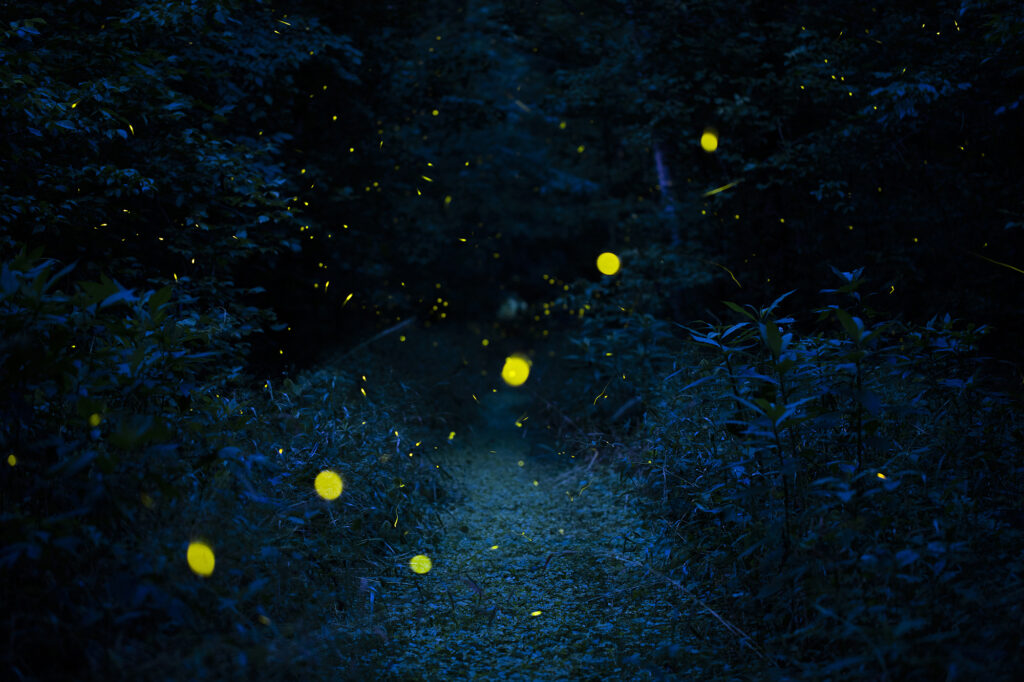
Nightairs by Samuel James
Fw:Books, Amsterdam
Over a period of four years, Samuel James has photographed groups of fireflies that gather in the forests of southern Ohio, a nocturnal nexus where the insects commune with each other through a mesmerizing display of light and color before they eventually expire. Through James’s lens, these ephemeral moments are transformed into gorgeous abstractions of light, color, and landscape that feel simultaneously cosmic and earthly. In the words of juror Alex Lin, Nightairs, “achieves the most out of the essential elements it takes to make a book: ink and paper. I can’t imagine a way you could create a larger impact with these basic materials.” Saddle-stitched and printed on a single stock of uncoated paper, with each image bled across the gutter and enclosed with a black border, the spellbinding patterns of light James captures are further elevated by the sophisticated approach to the book’s materiality.

Orange Grove by Clifford Prince King
TIS Books, New York
Orange Grove explores the concept of home and belonging, welcoming the viewer into a warm and intimate series of portraits of a community, focusing especially on depictions of Malcolm Marquez, King’s friend and fellow artist, in the home they made together. While the domestic space is a common photographic theme, King brings to it a gentle and consistent aesthetic, one that is drenched in the golden glow of late afternoon light, and each image is defined by carefully noted gestures of care. The choices of a tactilely inviting, warm-hued toothy paper and a minimalist design that provides ample space for the close consideration of his subjects both underscore King’s commitment to deepening the narratives around Black and queer masculinity. “King’s work is elegantly, simply, and effectively presented in this volume,” Martin comments. “It’s a slow burn in which each tableau adds to the atmosphere of ease and companionship, and deepens a sense of belonging.” The work carefully and conscientiously situates itself within a circle of artistic intimates, with nods to other practices in which embedded codes of queerness are key, sometimes via referenced images carefully placed inside the frame. “The book is full of a certain sense of ‘If you know, you know,’ while also taking care to leave space for the viewer to take part,” Martin notes.

Ghar by Anu Kumar
Perimeter Editions, Melbourne
Anu Kumar’s Ghar is a tender and poetic meditation on family, heritage, and immigration. Kumar, who was born in Kavi Nagar, India, but raised in Melbourne, Australia, was struck by her unfamiliarity with her birthplace when she returned at age twenty-one. Ghar encapsulates Kumar’s process of reflection and familiarization with her roots, tracing her five-year reengagement with her family home in Kavi Nagar and the surrounding neighborhood. Gentle portraits of her aunts and uncles intermix with quiet scenes from daily life, as well as scanned photographs from her family archive, providing a contemplative look into daily ritual, familial relationships, and personal history. “This book encapsulates so many sentiments of the immigrant experience with tremendous poetry,” says juror Alex Lin. “Even the smallest gestures, like the way the English text overlaps the Hindi on the cover, beautifully reference the multiplicity of the sense of ‘home.’”
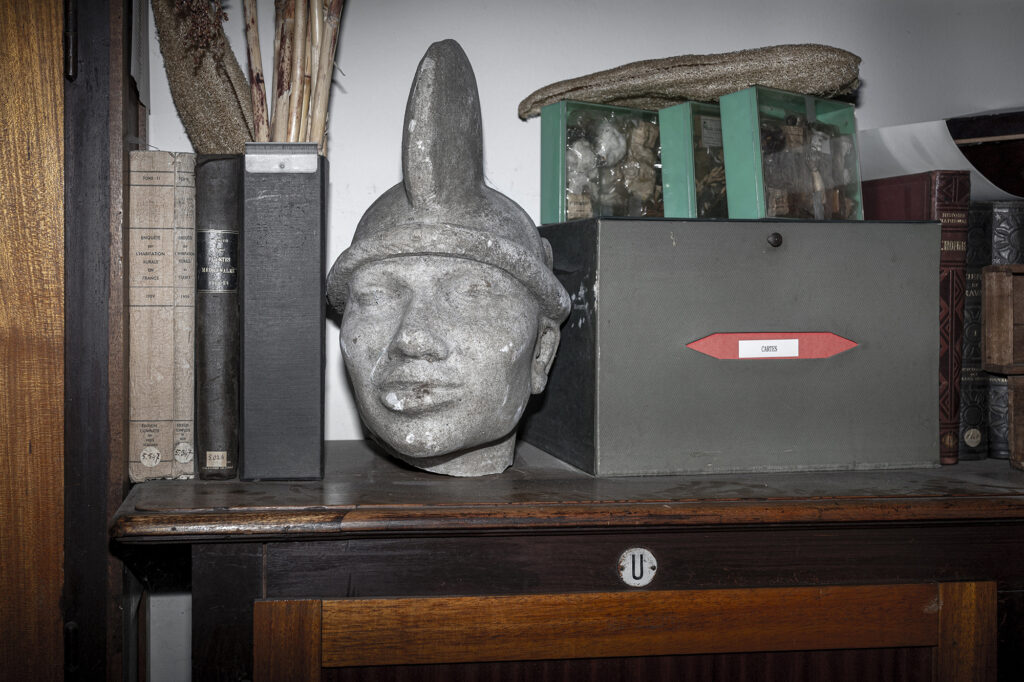
Statues Also Die by Jan Mammey and Falk Messerschmidt
Kodoji Press, Baden, Switzerland
Jan Mammey and Falk Messerschmidt’s Statues Also Die provides a detailed record of the artists’ exploration of Paris in search of the monuments to French colonialism that still stand. The book, like the Alain Resnais and Chris Marker film from which it took its title, is a work of documentation, research, and appraisal of the artifacts and monuments that continue to remind Paris of its colonial legacy. Documenting thirty-one different sites over the course of six months, and accompanied by text the artists gathered throughout their investigation, the captivating, full-bleed images, often of fragments and details of their subjects, immerse the reader in both day and night scenes that prompt questions about the objective truth of recent and distant history. “It is a beautifully realized book,” asserts Deirdre Donohue. “A sophisticated, engaging work, fact filled and a pleasure to hold and to read.”

El Retrato De Tu Ausencia (The Portrait of Your Absence) by Alejandro “Luperca” Morales
Kult Books, Stockholm, and Los Sumergidos, New York/ Mexico
To make the images in El Retrato De Tu Ausencia, Alejandro “Luperca” Morales collected hundreds of photographs from his local newspaper in Ciudad Juarez, Mexico, each containing graphic images of victims of homicide. Due to a period of increased violence in the city and the everyday nature of these murders, the local Mexican press allows these images to be published and disseminated. In an act of respect towards the victims, and in resistance to the sensationalism of the violence they portray, Morales intervenes, physically removing the corpses with an eraser, leaving uncanny vacancies where the bodies once were. “The way Morales erases parts of the image to reveal the printed text on the newsprint’s verso creates incredibly interesting and beautiful images,” observes juror Alex Lin. “It’s so interesting how that beauty belies the original violence of the photos.” The book, softbound with a lenticular cover, collects these altered images, which are often enlarged and cropped, emphasizing the halftone texture of the original newsprint, and further augmenting the disorienting effect of the images.

Hunting In Time by Ronit Porat
Sternthal Books, Montreal, Quebec
“A remarkable assemblage of pictorial juxtapositions and intriguing, surreal compositions—a fragmentary reconstruction of a particular moment in time,” observes juror Renée Mussai. Hunting In Time by Ronit Porat offers an abstracted retelling of a murder committed by sixteen-year-old Lieschen Neumann in 1930s Berlin. The investigation reveals the story of the victim, Fritz Ulbrich, a local watchmaker who created a pornographic photography studio in the backroom of his shop, including hundreds of images of young women. Porat offers a beautifully dense and unexpected visual capsule utilizing a sophisticated design that incorporates a natural linen cover and pages with rounded edges. There is a hapticity to the book, which includes series of black-and-white photographs of recurring human figures, animal forms, clocks, and other symbolic imagery on uncoated paper. These constellations of images speak to matters of time and memory and are interwoven throughout the book. “I was most intrigued by Porat’s multi-facted use of intricate nonlinear narratives: this is a kind of speculative photographic investigation through a nuanced, considered and conceptual activation of archival imagery,” says Mussai. The book illustrates Porat’s rich artistic practice, collecting and deconstructing the photographic archive and tracing complex human behavioral patterns while evoking the emotional dynamic between a predator and its prey.
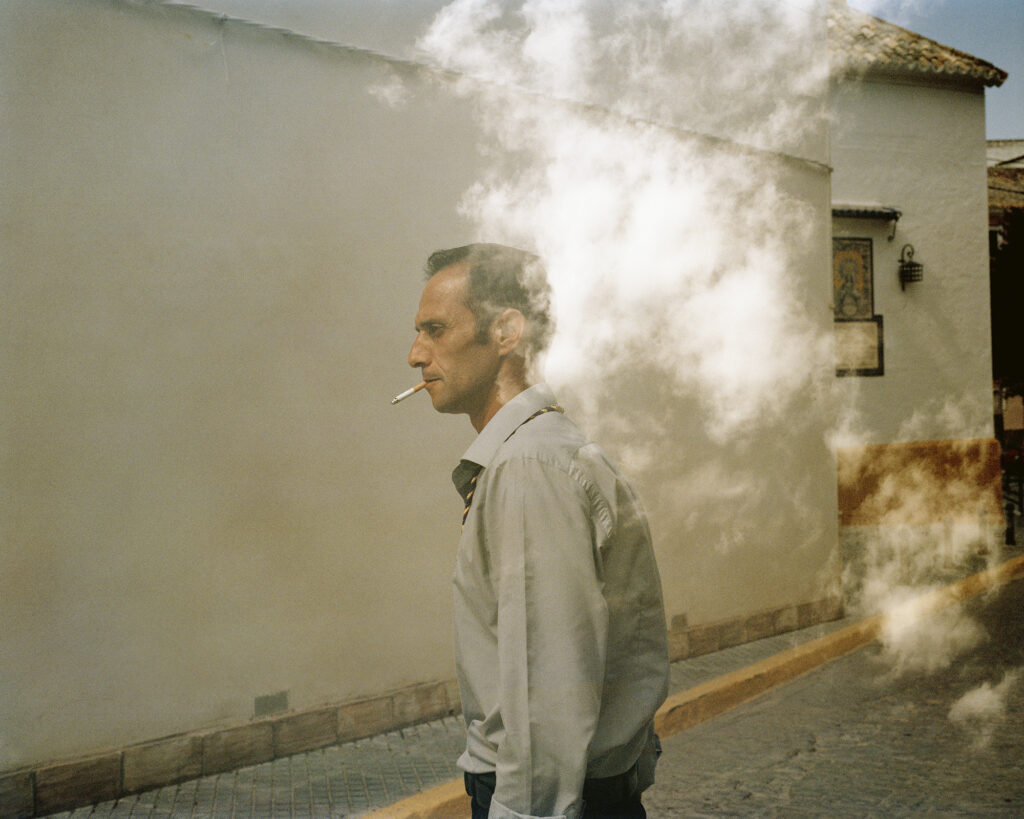
Subida al Cielo by Lúa Ribeira
Dalpine, Madrid
Subida al Cielo assembles five series by Lúa Ribeira, united by a thoughtful, engaged, and often theatrical approach to documenting marginalized communities. The series range in focus: from cognitively disabled women living in a religious institution in Galicia, Spain, where the photographer was born, to people experiencing homelessness in Bristol, UK, where she is currently based. Throughout the material, Ribeira works closely with her subjects to establish dynamic scenes and poses for each of the portraits, weaving together images of each community member alongside images of landscape to lend a heightened sense of metaphor and poetry backed by candor and authenticity. Each of the thoughtfully sequenced series are presented together simply, with ample borders around each image, the better to direct the reader through each encounter with the individuals depicted. The book offers a quiet, meditative walk through Ribeira’s diverse subject matter. “The book offers a captivating journey through the different series, led by a dreamy but clear-eyed artist, and highlighting her strong collaborative ethos as a photographer,” Planas confirms.
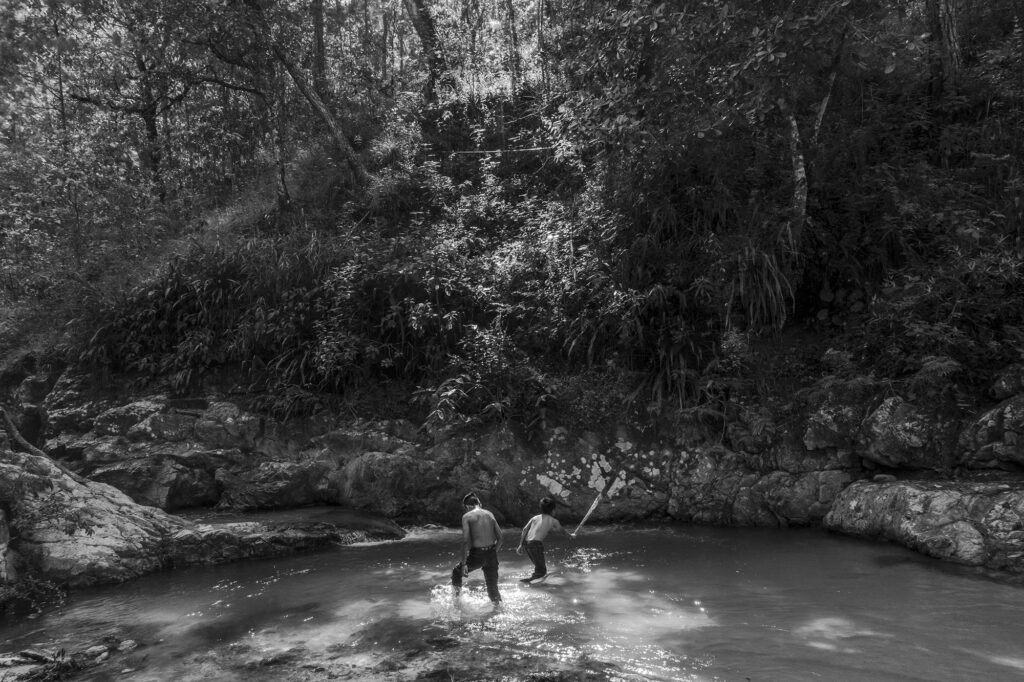
Montaña Roja by César Rodríguez
KWY, Lima, Peru
Montaña Roja by César Rodríguez brings us a lyrical portrayal of the embattled farming community of Guerrero, Mexico, his hometown. This modest but absorbing book focuses on the rich cultural traditions of the region while highlighting the role of poppy cultivation that has come to dominate local culture. As Planas states, “It’s a rare, insider’s document of the type of place that usually passes under the radar.” Rodríguez effectively immerses the viewer by presenting a tightly selected series of images in two separate booklets, each printed on a satisfyingly rough paper well-matched to the printing and to the atmospheric evocation of the region. The book brings together these sections with a clever yet elegant binding that allows the reader to interact with the sequences of images, in addition to a third booklet of poetry tipped into the back. The book as a whole is bound by red string, contrasting the black-and-white photographs to powerfully evoke the rich color of poppies. Planas continues, “There is a tension and strength in Rodríguez’s images, successfully evoking the place and the violence that is present there—it really tells the story of tradition and daily life.”
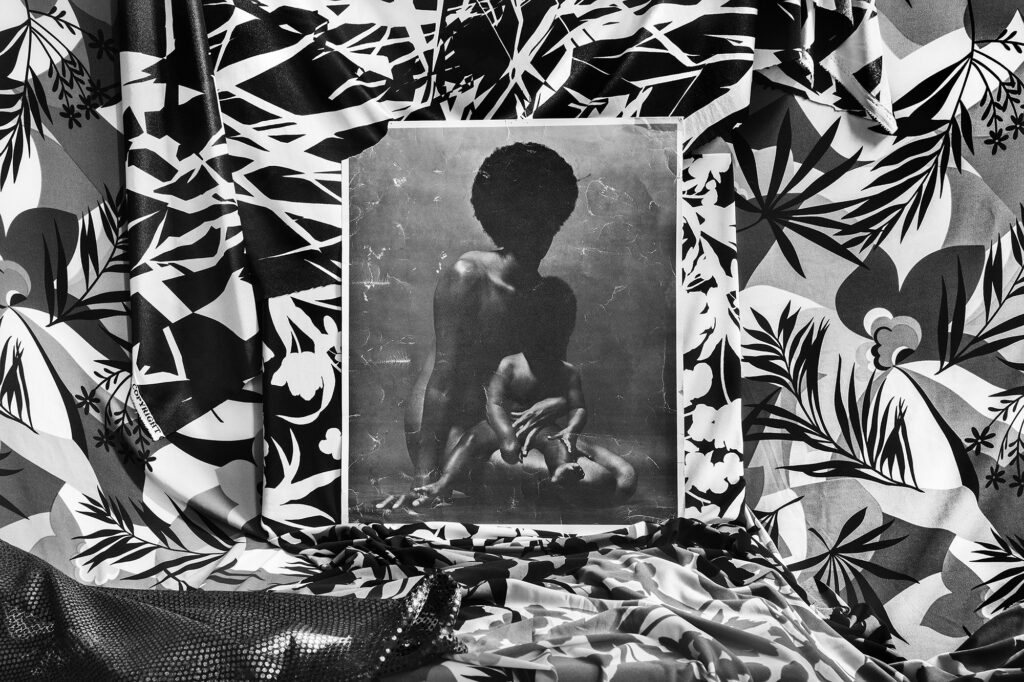
lick of tongue, rub of finger, on soft wound by Keisha Scarville
MACK, London
lick of tongue, rub of finger, on soft wound creates “an evocative cosmology of multiplicity, constituted in and birthed by many interwoven chronicles, visual fragments, and lived experiences that are anchored in a profoundly personal space, yet imbued with collective echoes and poetic reverberations,” according to Renée Mussai. Keisha Scarville has spent much of her life and artistic practice investigating her lineage, navigating notions of identity and belonging between the Caribbean and the United States. Her powerful first artist’s book speaks to questions of time, memory, and tracing of ancestral narratives. The artist’s black-and-white imagery feels contemporary and charged, at times incorporating archival images and film stills. The book utilizes a simple yet alluring design that allows the images to flow from page to page, reflecting the artist’s hybrid practice, rooted in collage and juxtaposition of visual ideas. Lick of tongue, rub of finger, on soft wound offers, as Mussai states, “a hypnotic and sublime essay of diasporic visuality where past, present, and future sentiments dance and collide.
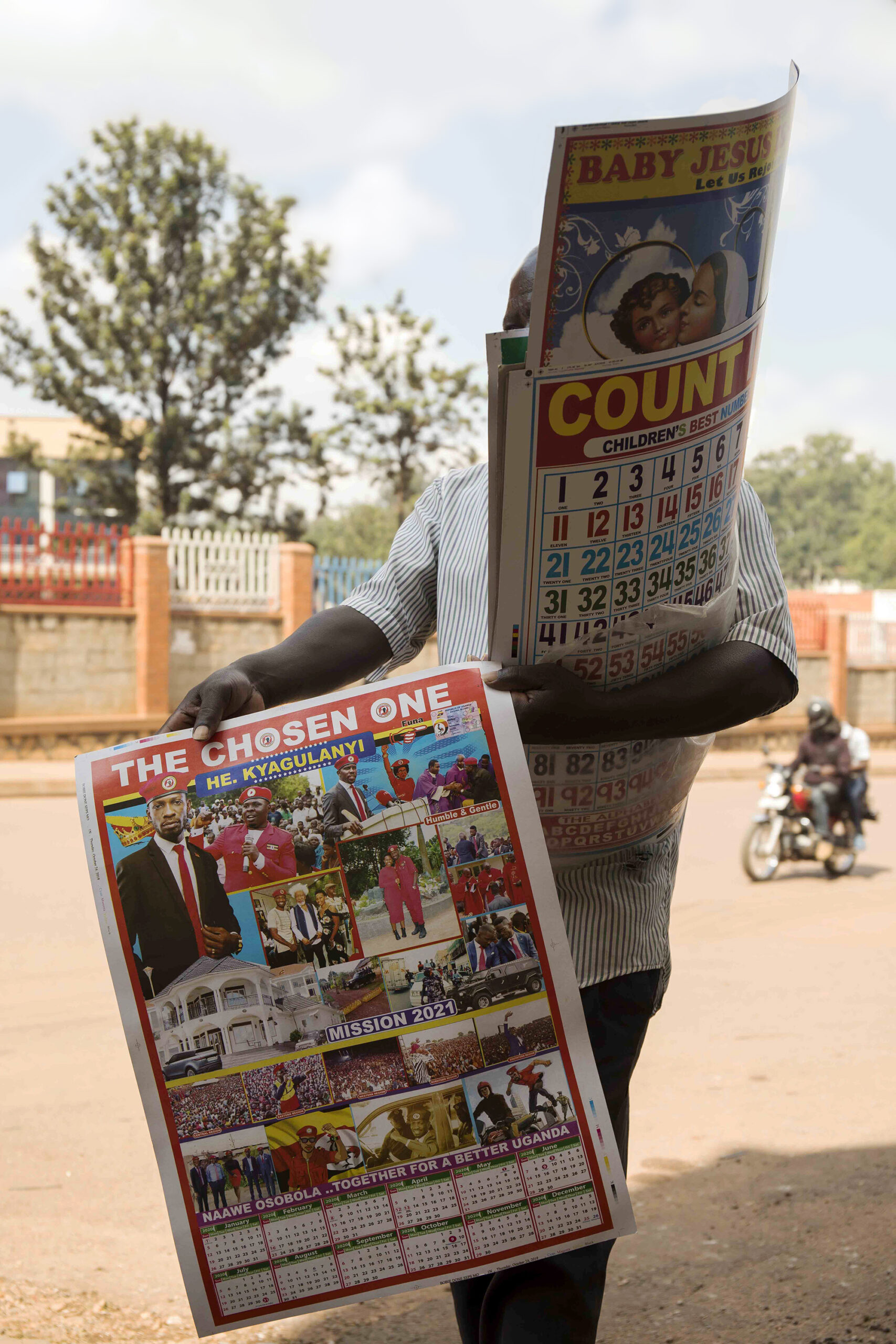
Nasser Road / Political Posters in Uganda, Kristof Titeca, ed.
The Eriskay Connection, Breda, Netherlands
Nasser Road / Political Posters in Uganda investigates the print culture of Nasser Road in Kampala. Often referred to as Uganda’s Silicon Valley, the street is known as a nexus for the print trade, but also fraud: any formal or bureaucratic document can be faked and bought there. Kristof Titeca’s interest in Nasser Road, however, lies in the print culture of the hyperbolic political posters and calendars produced there. The posters often celebrate nefarious figures like Saddam Hussein, Kim Jong Un, or Osama bin Laden, who are photoshopped onto the bodies of RoboCop or Darth Vader; in others, Vladimir Putin and Volodymyr Zelensky are recast as Ultimate Fighter combatants. Over-the-top, raucous, and strange, they exemplify a brash rejection of Western imperialism conflated with a fevered embrace of authoritarianism and pop-culture gone askew. The majority of this slim volume is reproduced on the same cardstock used in printing the actual posters—glossy on one side and uncoated on the other. An additional section of photographs illustrating the production process by Ugandan photographers Badru Katumba and Zahara Abdul, is printed on uncoated paper. “The material choices add a clever touch to an already fantastic book,” notes juror Alex Lin. “The cardstock used throughout the book structures and presents the content perfectly, creating a uniquely supportive platform for Titeca’s research.”

Mountain of Salt by Bindi Vora
Perimeter Editions, Melbourne
Mountain of Salt is a delightfully cacophonous compilation built from found images and appropriated text produced by the artist and curator Bindi Vora during the Covid pandemic. The series features text-based collage works, which Vora obsessively archived, drawing from the flow of visual and textual fragments around her—a ritual she took on as a coping mechanism during the solitary times of the pandemic. The small but densely packed book places archival, black-and white photographs, overlayed with digitally colored patches in different shapes. The images function in dialogue with language drawn from news articles, press conferences, and social media. Slyly interweaving the familiar political and ideological arcs in the wake of Brexit, the COVID-19 outbreak, and the murder of George Floyd, Mountain of Salt echoes the poignant, and at times humorous, responses to a time of unparalleled uncertainty and fear. “For all the work made about life in the pandemic, this is a deceptively complex piece of art,” commends Deirdre Donohue. “A boldly poetic look at our modern troubles, it is both sobering and heartening.”

Tender by Carla Williams
TBW Books, Oakland, California
“Thisreads andfeels like a beautiful and intimate journey realized in book form, evocative of an artist in tender commune with her younger self, by someone who has committed much of their artistic practice to advocating for Black women’s visibility and representational politics,” observes juror Renée Mussai. Tender by Carla Williams reveals a series of images, including private self-portraits of an eighteen-year-old Williams taken during her time studying photography at Princeton University in the mid-1980s and ’90s. The design is modest yet sophisticated, offering an intimate glimpse into a pivotal moment of the artist’s life. The book remains coherent and engrossing in all aspects of the work, from the artist’s motive to its intellectual rhythm communicated through an essay by artist and scholar Mireille Miller-Young that serves as a mediation around Black feminist expression. “Williams conjures a visual alchemy and shifting sensuality from one page to the next—from image to image, consistently imbued with a profound sense of being and becoming, of stillness, fierceness, and desire. This publication is a very generous and special gift,” says Mussai. Tender is gentle yet immensely seductive as a platform for the artist’s coming-of-age, conveying maturity, sensuality, and possibility.
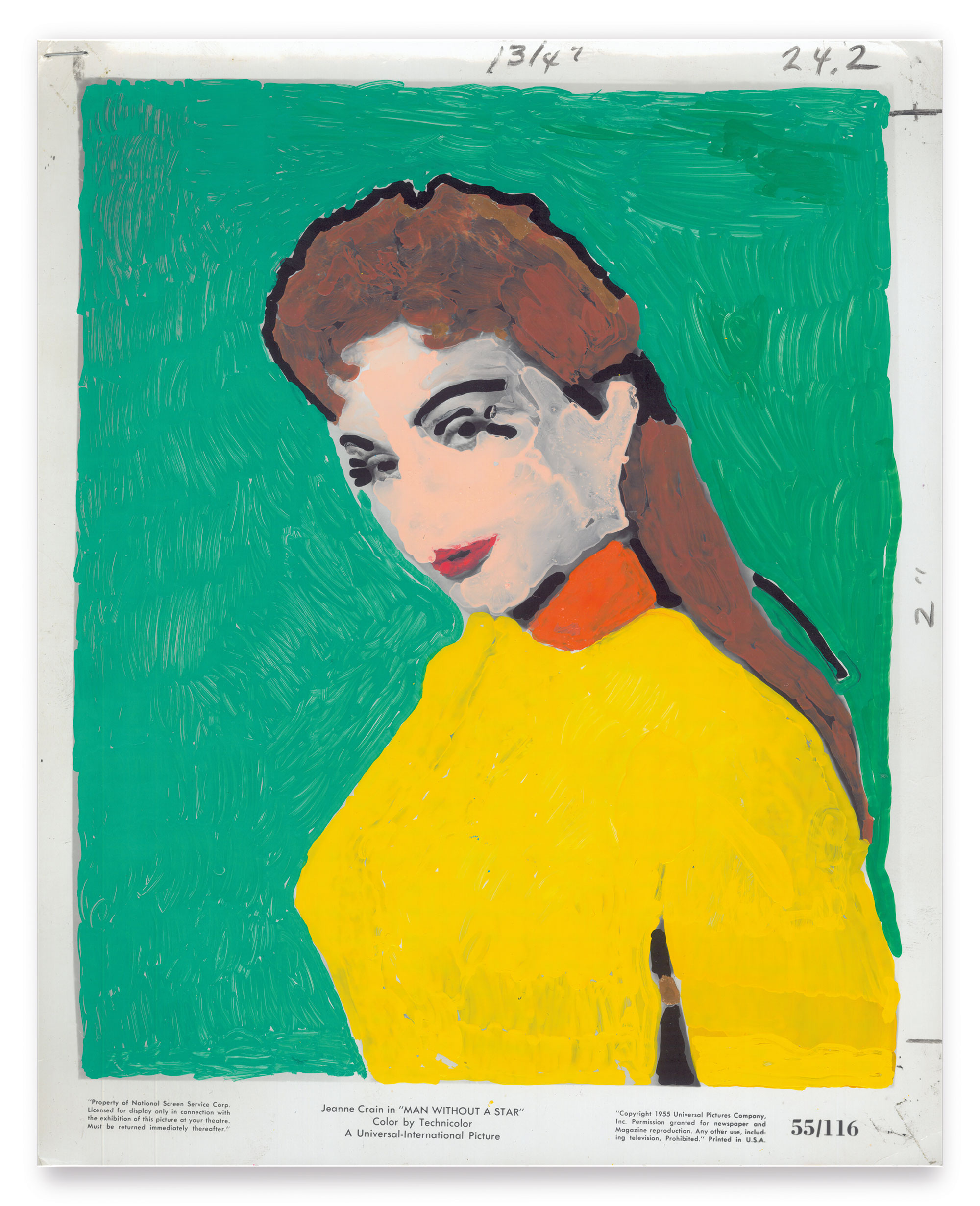
Painting Photographs by Alice Wong
TBW Books, Oakland, California
Alice Wong’s Painting Photographs takes vintage vernacular photographs as a launch point for what become delightfully colorful and playful abstractions via the artist’s enthusiastic painting technique. Wong’s hyper-saturated palette, attention to composition, and energetic brush strokes revitalize what are otherwise pedestrian found photographs of everyday life. The painted photographs are reproduced at various sizes and placements across the spreads, further activating the overall sense dynamism found throughout the work. “I love the way the design of this book—the bright pink softcover, the color of the image pages, and the idiosyncratic layout of the images on the spreads—emphasize Wong’s images,” says juror Alex Lin. Painting Photographs is a lively celebration of the artist’s vibrant practice, as well as a tribute to the work of Creative Growth Art Center, an organization for artists with developmental, intellectual, and physical disabilities, with whom Wong, a renowned disability activist as well as artist, has worked since 2003.

1 2 3 2 1 by Yao Yuan
Self-published, Antwerp, Belgium Photographer
Yao Yuan presents a raw, expressive record in 1 2 3 2 1, a 304-page photographic memoir that serves as a dense yet intimate documentation of pregnancy, birth, and motherhood as experienced by their friend Nagakura Nami. The book presents its story via pure visuality, uninterrupted by textual elements, beautifully printed on uncoated paper. “There is an emotional depth and ephemeral quality to Yuan’s images and a consistently powerful visual temperature that run as a leitmotif throughout the book, creating a deep sense of contemplation on life and love, self and other, time and place, and our relationship to the environment,” observes juror Renée Mussai. The fusion of blurred cinematic landscapes, cityscapes, and figurative compositions explores themes of identity while referencing the continued tension between nature and society through an emotive and personal lens. 1 2 3 2 1 is a recollection of life’s changing seasons, from the mundane to explorations of self-discovery through the evolving layers of motherhood.
PhotoBook of the Year

The Drawer by Vince Aletti
SPBH Editions, London
The Drawer illustrates the vivid accumulation of photographic ephemera gathered over the years by esteemed photography critic and curator Vince Aletti. “This phenomenal publication offers special insight into one person’s unique commitment to collecting, curating and archiving imagery in public circulation over several decades. Deeply engaging, it represents a bold testament to complex notions of desire and visual pleasure,” states juror Renée Mussai. The seventy-five multi-layered compositions brought together in this book include gallery announcements, magazine tear sheets, newspaper clippings, and other printed materials dating from the 1970s to the present. The pages’ layout references the chance layering and juxtapositions of Aletti’s flat files. Each oversized spread is printed on lush, uncoated paper, unencumbered by text, entwining the worlds of art and fashion with homoerotic candor that feels provocative and daring. The images utilize the entire printed page, as full bleeds from beginning to end. “A visual feast, it is an apt reflection of Aletti’s long-standing career and commitment to art history, inviting readers to an astute mode of looking and seeing which has long nourished his practice as a critic,” says Mussai. The Drawer is an ode to the collector, a personal yet recognizable retelling through the printed page and the lure of the photographic image.

Archivo Nómada Vol. 1: 1975–1981 Alberto García-Alix, Frédérique Bangerter, ed.
Editorial Cabeza de Chorlito, Madrid
Alberto García-Alix’s Nomad Archive functions as a chockablock, immersive survey of the first six years of the photographer’s long-standing career. The monograph includes more than two thousand images taken between 1975 and 1981: the historical moment of democratic transition in Spain after the death of dictator Francisco Franco. The plethora of informal, black-and-white images of García-Alix’s friends taken in their apartments, at parties, and on the streets of Madrid beautifully documents youth culture during this time. A crisp, contemporary design makes effective use of contact sheet–style grids, evocative pairings of single images, and horizontal images turned on their side, all bound together with an open spine. Per Anna Planas, “The design is very contemporary; it really suits the archive incredibly well and it is quite pleasant to see the truth of a whole sequence.” On top of the fresh design treatment, previously unseen photographs breathe new life into what we already know of García-Alix’s work. Planas notes, “it is an ambitious, generous gift of a book.”

Dialect by Felipe Romero Beltrán
Loose Joints, Marseille, France
In Dialect, Felipe Romero Beltrán documents the lives of young Moroccan men who have recently migrated to Seville, Spain. Over the course of multiple years, Beltrán collaborated with his subjects as they lived in a state of suspension while awaiting Spanish citizenship. In the process, the photographer learned the young men’s harrowing stories of migrating by boat, many of which are recorded in the book. In Beltrán’s photographs, the men take on dynamic, dance-inflected poses, juxtaposed against intimate images of the tight spaces they live in, beautifully capturing the push and pull of migration and the liminal space in which the subjects exist. A simple, elegant design and stripped-down materiality support the rawness of their stories. “It’s a study of the gestures and physicality of what it means to come to Spain from Morocco,” says Anna Planas. “The jury was intrigued by the way Beltrán has collaborated with these young men to build a reflection about the body, and the choreography and movements of migration This aspect of the exploration is further supported in the textual material and documentation of a related performance included in the back of the book.”

Observatories/Laboratories and Laboratories/Observatories by Lynne Cohen and Marina Gadonneix
Atelier EXB / Centre Pompidou, Paris
Twinned monographs published on the occasion of an exhibition at Centre Pompidou, Lynne Cohen: Observatories and Marina Gadonneix: Laboratories present anintergenerational dialogue between two artists who had begun a correspondence a year before Lynne Cohen’s death. Complimentary in their impressive black-and-white graphic treatments, these dual-volume large-format books allow the viewer a glimpse into this unexpected and exciting exchange. Cohen’s photographs of the interiors of public spaces—classrooms, living rooms, and lobbies—serve as inspiration for Marina Gadonneix, who documents scientific research sites in which natural phenomena are analyzed. The artists’ shared interest in desolate physical spaces illustrates a contrasting drive to investigate and question social space. “This is a powerful, deep assessment of known and unknown works by both artists” remarks juror Deirdre Donohue. “In this elegant set of books, we are witness to the restitution of lost recognition and new connections being made.”
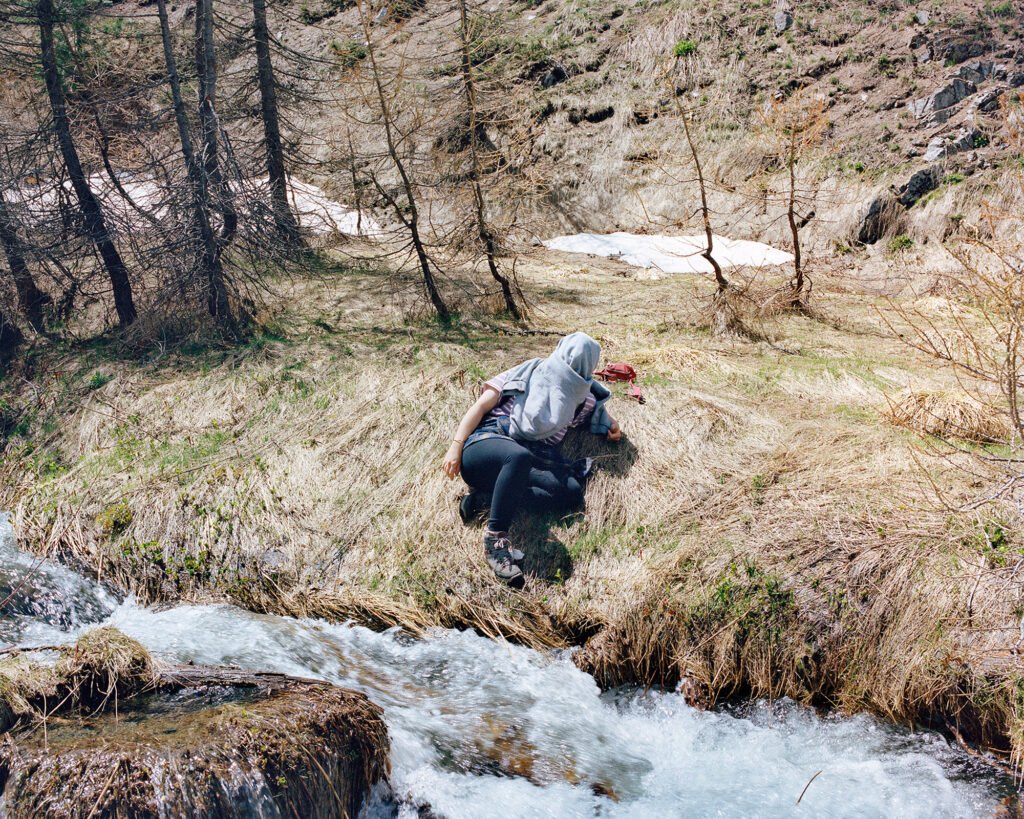
Bilateral by Samuel Gratacap
Poursuite, Arles, France
Bilateral offers a rich visual narrative on the experience of refugees on the Mediterranean rim. “A poignant mediation of exile, voyage, and passage, the book extends an empathetic invitation to the reader to immerse themselves in one of the most urgent and critical conversations of our time,” posits juror Renée Mussai. The title speaks to Gratacap’s deeply rooted research in geopolitical crises, communicated through his staunch refusal of conventional media portrayals of these events. “Gratacap’s at times abstract, poetic imagery does not follow the logic of straightforward reportage; instead, it adopts a more poetic but equally powerful approach to speaking to pivotal questions of exile, motion, and migration,” says Mussai. Gratacap’s presentation of blurry black-and-white photographs spread across the double pages creates a transfixing, conceptual visualization of border crossings and temporary occupation. The consistent palette and elegant, restrained design underscore and support the artist’s lyrical strategy. Presence versus absence is symbolically conveyed through figures, often obscured or faceless, encouraging the reader to consider the portrayal of these intense voyages through broader ideas of displacement, belonging, and identification.
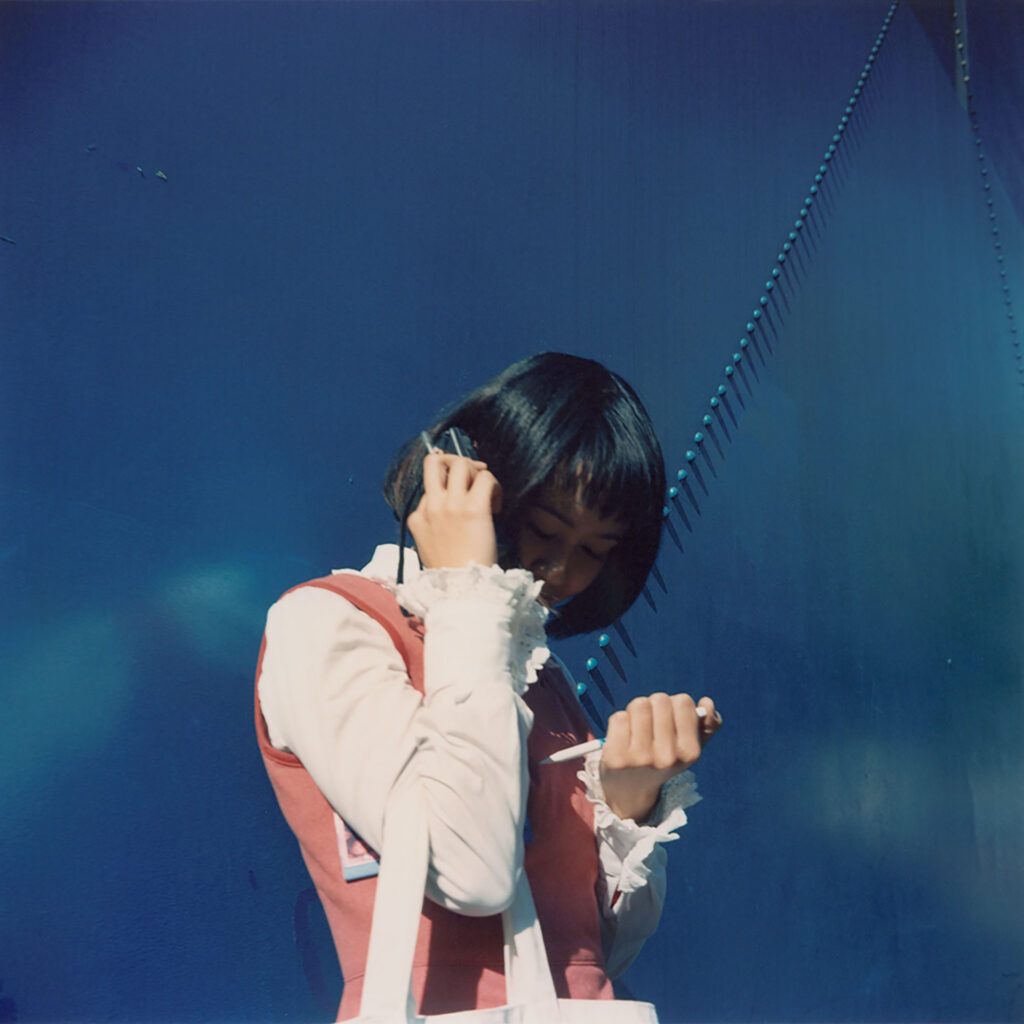
Small Myths by Mikiko Hara
Chose Commune, Marseille, France
Small Myths offers a moving, poetic meditation on the camera as a self-extension—a collection of memories assembled from chance encounters and the rhythms of ordinary life. In collaboration with Marseille-based publisher Chose Commune, artist Mikiko Hara has put together a “beautiful, engaging sequence out of her curious, gentle images,” says Deirdre Donohue. The photographer, who works with a personal, diaristic sensibility, is keenly interested in documenting and preserving small moments. Small Myths includes thoughtfully sequenced, square-format images that show playfully sliced sausages in a frying pan, Hara’s son sprawled out on the floor, culled tulips in a vase in the sink. Interspersed with short journal entries and printed on delicate, uncoated yellow paper, Hara invites the reader to consider a series of pared-down, intimate moments. The cover is given a similarly minimalistic treatment, allowing for a singular image to provide a “pure invitation presented in the form of a mysterious photograph,” according to Donohue. “The book provides an unfettered pleasure thanks to the book’s sensitive and subtle renditions of affection.”
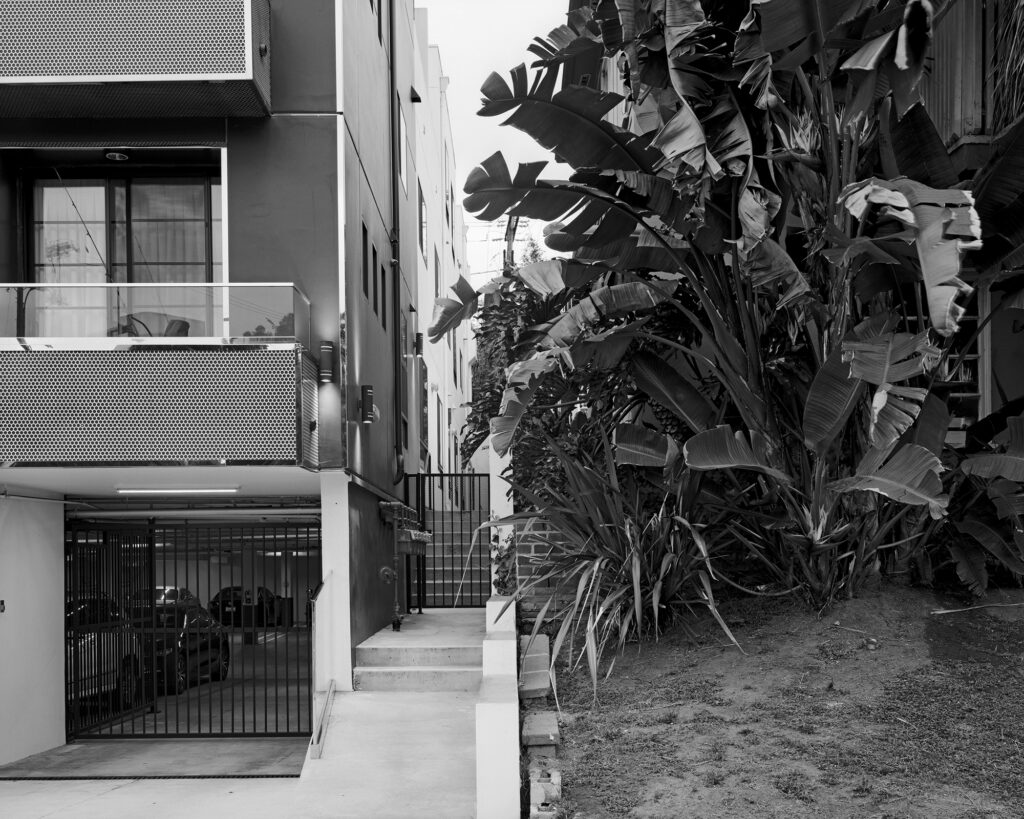
L.A. Vedute by Thomas Locke Hobbs
The Eriskay Connection, Breda, Netherlands
Los Angeles, one of the most photographed and filmed cityscapes in contemporary times, is the subject of this chunky and entrancing softcover book. In L.A. Vedute, Thomas Locke Hobbs rigorously focuses on interstitial landscapes found between buildings and homes, photographing with a large-format camera to render his images with maximum crispness and detail. Each spread features a single black-and-white photograph, split neatly down the middle by the book’s gutter, an apt use of the architecture of the book form to highlight the geometry and structure of the images. The use of the Italian word Vedute (views) in the title, rendered via Roman-era inscription-like type on the otherwise minimalist cover, further confirms a classical architectural ethos—think Piranesi’s one-point perspective or Canaletto’s topographic views. In between suites of these individual images, the viewer is treated to close-ups of weeds, mud, and the ever-present abandoned shopping cart, all printed on yellow paper—a bracing jolt of color and chaos. “Despite the formality and preciseness of the layout, the double page spreads, unabashed embrace of the gutter (something many photographers abhor), and interleaving hits of color make this a sharp, contemporary book,” remarks juror Lesley A. Martin. “It points to all the ways in which a well-matched book design and materiality can bolster a strong body of work.”
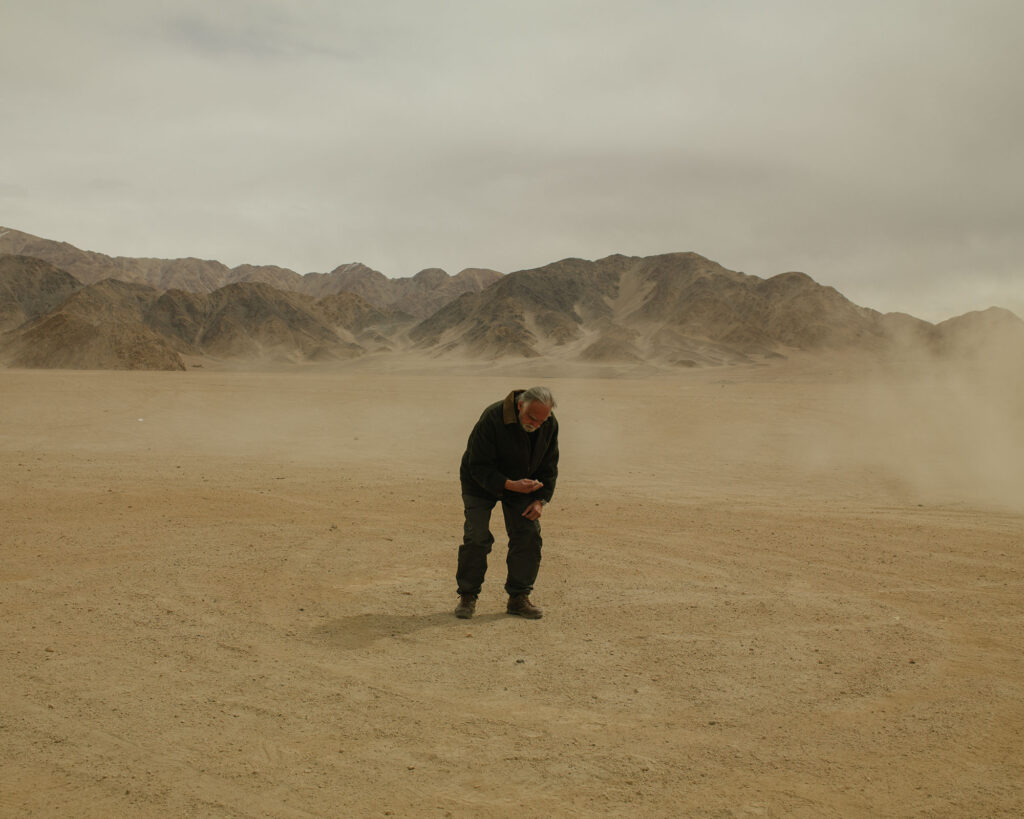
The Sapper by Bharat Sikka
Fw:Books, Amsterdam
The Sapper depicts a collaboration between photographer Bharat Sikka and his father, a former “sapper” in the Indian Army Corps of Engineers. Each image draws on subtle, sometimes surreal gestures, and the book’s compelling sequence, rich with oblique references to both author and subject, effortlessly represents the nature of their complex relationship. Each image feels both intimate and “hard-won,” as Sikka describes it—an expansive portrait, sketched in fragments. The soft-bound book houses a constructed and deconstructed imagery that form a puzzle meant to be solved. Sikka draws attention to the limits of the photographic medium to highlight the impossibility of deciphering the known and unknown, through portraits of his father coinciding with collage, still lifes, and interventions within the landscape. An accompanying essay by Charlotte Cotton gives a wonderful clarity to the quiet, conceptual, and at times, performative work. “The images are provocative,” Deirdre Donohue states, “infused with a sense of magical realism; this book bears close looking and re-looking.”

Far Away from Home: The Voices, the Body and the Periphery by Hristina Tasheva
Self-Published, Bodegraven, Netherlands
Far Away from Home: The Voice, the Body and the Periphery draws on Hristina Tasheva’s personal experience as an emigrant from Bulgaria to the Netherlands—two nations that both carry potent but contrasting legacies of communism from World War II. Her central line of inquiry lies in a dialectic between the Dutch communist resistance against the Nazis during World War II and the totalitarian Bulgarian communist party that formed after the war in an effort to realize an ideological utopia. Tasheva decided to retrace the footsteps of both groups in order to try to reconcile their contesting relationships with communism and approximate their collective memory. Far Away from Home is the result of Tasheva’s comprehensive investigation. Rich black-and-white images Tasheva took at former Nazi concentration camps, drawings, academic and archival research, and written testimony weave a poetic and extensive narrative across the book’s uncoated paper. “For a book containing so many different types of information, the design is incredibly restrained, considered, and beautiful” notes juror Alex Lin. “Everything is so satisfying. The way the type, photographs, and drawings come together on the uncoated paper is perfect.”
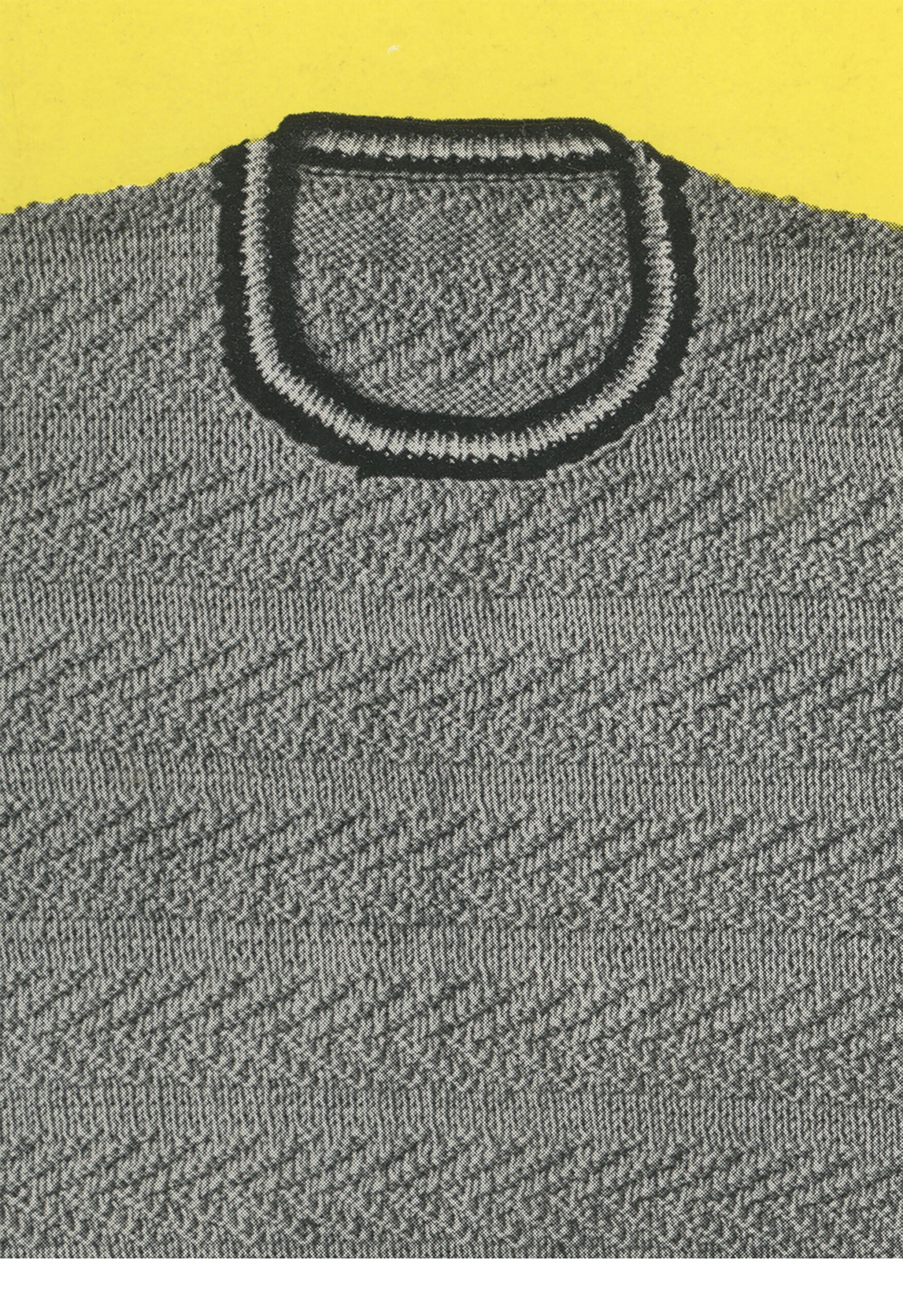
The Oldest Thing by Ruth van Beek
Van Zoetendaal Publishers, Amsterdam
The Oldest Thing presents an engrossing collection of Ruth van Beek’s work that is personal and quietly moving, drawing on three binders of illustrated recipes and household projects that her mother left behind. Van Beek’s mother, who died when the artist was fifteen, was a traditional homemaker, and the images used in The Oldest Thing often bear the earmarks of classic domesticity—cakes, sewing projects, and potted houseplants. Each page contains an image that has been carefully selected and isolated, occasionally collaged together with other images, or painted over. Familiar objects are made into ciphers, becoming obsessive and strange. And yet, in the recitation and repetition of these images, there is also a certain comfort and soothing calm. Seven poems by the writer and artist Basje Boer punctuate the flow of images, giving the viewer opportunity to pause and process the work. “It’s something you want to hold close in your hand—a very satisfying little brick of a book showcasing what Ruth van Beek does best, mining the living image archive that we all inhabit,” concludes Martin.
Photography Catalog of the Year

Casa Susanna: L’histoire du premier réseau transgenre américain, 1959–1968
Isabelle Bonnet and Sophie Hackett, Editions Textuel, Paris
Casa Susanna, L’histoire du premier réseau transgenre américain, 1959–1968 provides an evocative, in-depth view of a storied crossdressing community situated in the Catskills, New York during the late 1950s and ’60s. The book expresses a “beautiful sense of transgressive joy, courage, and freedom,” observes juror Renée Mussai. Casa Susanna utilizes a minimalist design accompanied by serif and a monospaced typeface on uncoated paper, incorporating reproductions from the original Transvestia magazine—a pioneering publication contextualizing transgender experiences. The book creates a delightful archival dialogue between the images and modes of their original distribution, in which the viewer is invited to interpret the visual history of a bygone era in relation to both past and present understandings of gender and personal expression. “Think of this book as a crucial document of collective being and becoming, examining critical questions surrounding kinship and acceptance,” says Mussai. The photographs are candid and personal, offering new access to a community that courageously challenged heteronormative ideals in a safe space where they could exist without fear, prosecution, or societal judgment.

Japanese Photography Magazines: 1880s to 1980s
Ryuichi Kaneko, Masako Toda, Ivan Vartanian, Goliga, Tokyo
Japanese Photography Magazines: 1880s to 1980s is an impressive, meticulously researched, five-hundred-page survey anthologizing one hundred years of Japanese visual history through the lens of photography magazines. Packed with over 1,300 illustrations, this catalog contains an incredible collection of photographic essays, as originally published, by an exhaustive range of both well-established and historically overlooked photographers. An additional gift to the reader is the abundance of texts written by artists to accompany their images, presented here for the first time in English-language translation. Each selected story is gorgeously reproduced in its entirety, including the advertisements interspersed between editorial pages. This title serves as a unique and vital prequel to understanding the far-reaching history of Japan’s print culture, while also charting the evolution and definitive characteristics of photography in Japan. “The jury unanimously recognized this book’s considerable contribution, and appreciated the deep commitment to scholarship in an area that is not widely known,” states juror Deirdre Donohue, “We’ve been anticipating this book for a very long time—and it’s well worth the wait.”

Källström-Fäldt
Klara Källström and Thobias Fäldt, Verlag der Buchhandlung Walther und Franz König, Hasselblad Foundation, B-B-B-Books, Gothenburg, Sweden
Källström-Fäldt skillfully blends utilitarianism and elegance to collect Klara Källström and Thobias Fäldt’s projects from over a decade of work. The screw-bound, open-spine catalog, assembled in a live performance by the artists as part of a recent exhibition at the Hasselblad Foundation, traces their sustained interest in the visual culture of news media, and the role it serves in informing our perceptions of history and power. Topics like the WikiLeaks scandal, the military-entertainment complex in the United States, and the colonial histories of France, Great Britain, and Canada all fall into the artists’ shared oeuvre, and are explored through a mix of archival images, research documents, and the artists’ own photography. “Everything about the execution of this book, the design, materials, and structure, are perfect and sophisticated solutions for a book assembled live, during an exhibition,” lauds juror Alex Lin. “The understated combination of acetate, cardboard, and paper create a wonderful and meticulous logic to organize the artists’ work.”

Recaptioning Congo: African Stories and Colonial Pictures
Sandrine Colard, Lannoo Publishers, Tielt, Belgium, and Fotomuseum FOMU, Antwerp, Belgium
Recaptioning Congo: African Stories and Colonial Pictures takes on the crucial task of reclaiming the colonial visual narratives of the Congo, providing an extensive, multi-layered examination of this complicated photographic history. Published as a companion to an exhibition at FOMU Antwerp, the volume functions as a dialogue between texts by contemporary Congolese writers Sinzo Aanza, In Koli Jean Bofane, and Annie Lulu, and the historical archival photographs, breathing new meaning into images created and received through a biased, colonizing lens. The catalog design takes its inspiration from the minimalism and primary colors utilized by W. E. B. Du Bois in the sociological graphs created for his 1900 Paris World’s Fair “Exposition des Nègres d’Amérique.” This understated approach allows for an elegant and clear visual structure in support of the consequential and pressing historical analysis contained within. Anna Planas called out for special attention the book’s work to “bring together invaluable research conducted across three continents.” In addition to the generous spirit of scholarly collaboration as a means of redress and reconciliation, Planas notes that this is a thorny but important subject, recalling that the jury appreciated its concern with “the role of visual culture and its influence on history, as well as the importance of addressing the colonial roots of photography.”
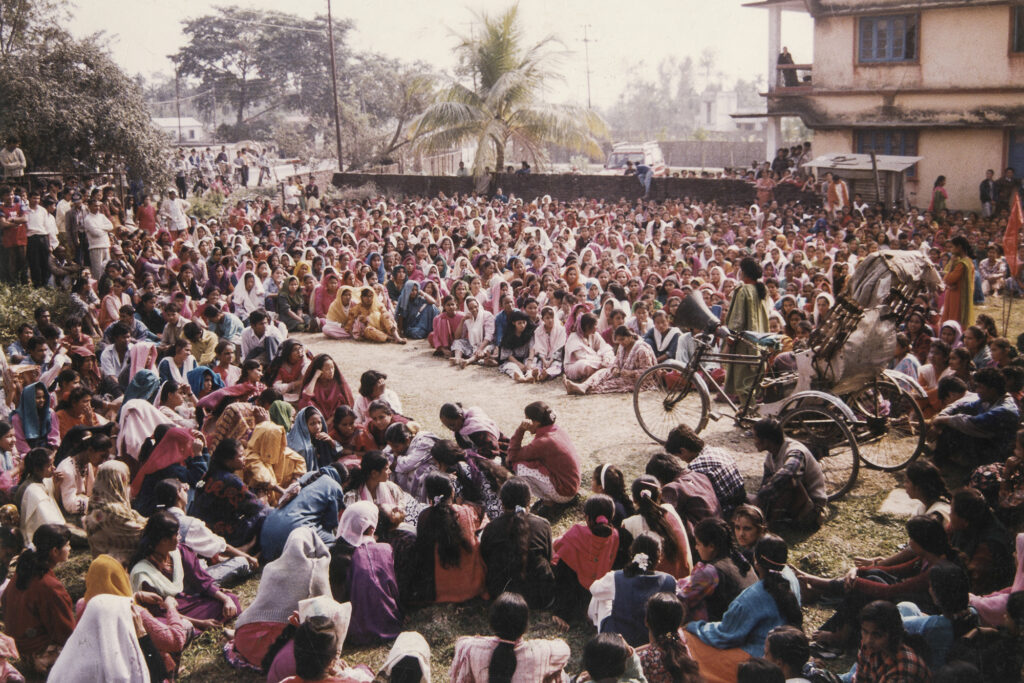
The Public Life of Women: A Feminist Memory Project
Diwas Raja Kc and NayanTara Gurung Kakshapati, Nepal Picture Library / photo.circle, Kathmandu, Nepal
The Public Life of Women is an inspirational collection of images, documents, and the profiles of key contributors to feminism and champions of women’s rights in Nepal. Organized by photo.circle, a platform for photography and the force behind Photo Kathmandu, the more than five hundred images included in this volume were drawn from the Nepal Picture Library, a visual archive created with the goal of preserving and exploring the country’s social, cultural, and photographic history. The Public Life of Women was published on the heels of an exhibition of the work that has traveled to New Delhi, Singapore, and, most recently, the 2023 Istanbul Biennial. Shortlist juror Lesley A. Martin calls the book “a compelling, eye-opening document delivered in a compact but satisfying and impactful form. It’s a testament to the power of a carefully cultivated archive activated via the book form.” In words and images, The Public Life of Women is a moving roll call of lives and names—a fierce and consequential preservation of the inspiring stories and contributions of Nepali women who made a difference to their mothers, daughters, sisters, and fellow citizens.
An exhibition of 2023 PhotoBook Awards Shortlist will be on view at Paris Photo November 9–12, and will travel to Printed Matter in New York City in January 2024.





